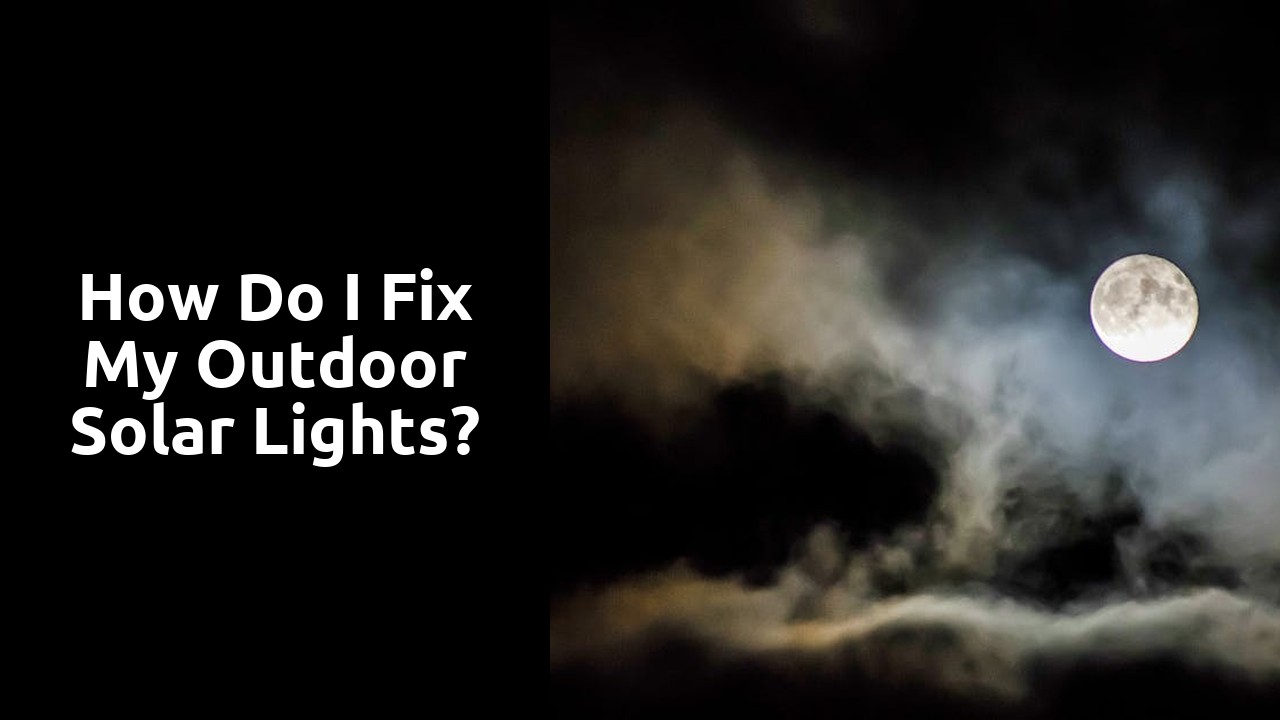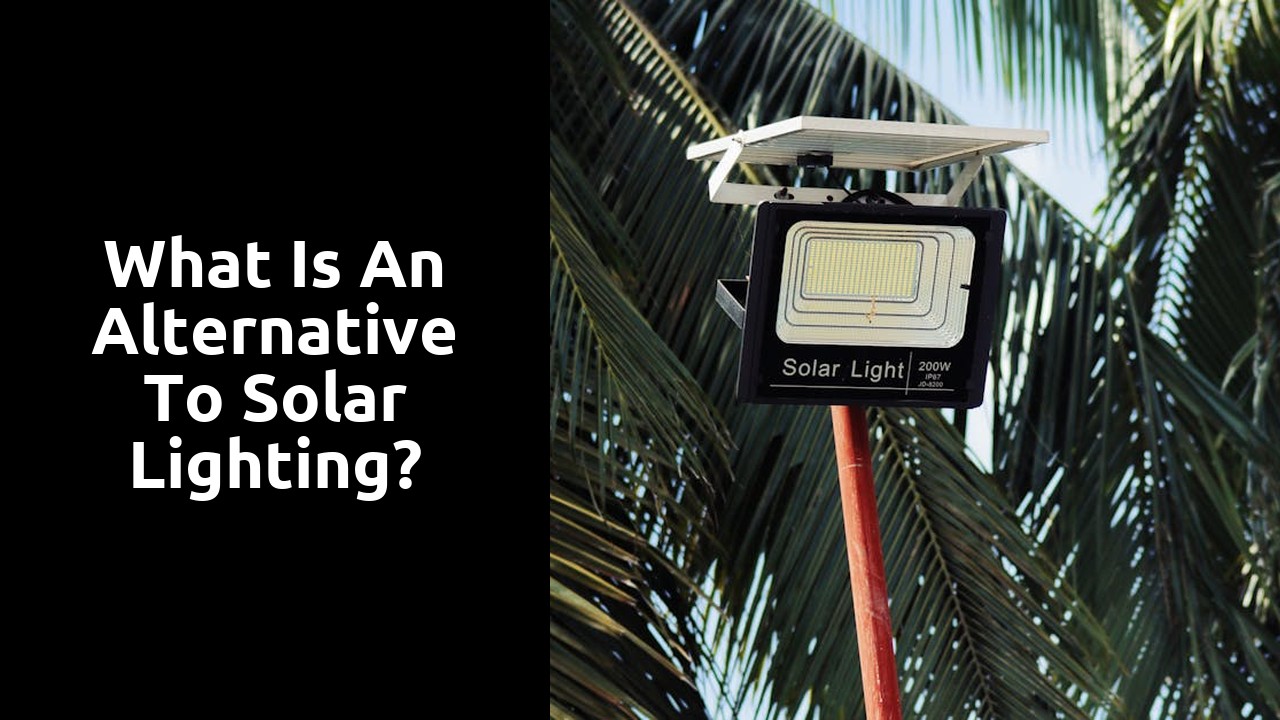
Table Of Contents
Repairing or replacing the stake
Repairing or replacing the stake is a crucial step in ensuring the optimal functioning of your outdoor solar lights. The stake provides stability and support to the light, allowing it to absorb sunlight efficiently. If the stake is damaged or wobbly, it can impact the light's ability to charge properly, resulting in dim or flickering illumination. To rectify this issue, carefully inspect the stake for any signs of wear and tear, such as cracks or bending. If the stake is damaged, it is advisable to replace it with a new one to maintain the integrity of the solar light system. By securing a sturdy stake, you can enhance the stability of the light and promote effective solar charging, thus optimising the performance of your Solar Lighting Solutions.
Ensuring the solar light is securely planted in the ground
To ensure the stability and longevity of your outdoor solar lights, it is crucial to securely plant them in the ground. Start by choosing a suitable location that receives ample sunlight throughout the day to maximize the solar charging capabilities of the lights. Dig a hole that is deep enough to accommodate the stake of the solar light and ensure it sits firmly in place. Make sure the soil is compacted around the stake to prevent wobbling or tilting, which can affect the efficiency of the solar panels.
Properly anchoring your solar lights in the ground not only enhances their performance but also reduces the risk of damage from strong winds or accidental knocks. When installing multiple solar lights, maintain a consistent spacing to create an aesthetically pleasing look while ensuring each light receives sufficient sunlight for charging. Regularly check the stability of the lights, especially after severe weather conditions, and adjust as needed to maintain the effectiveness of your Solar Lighting Solutions.
Weatherproofing the solar lights
Weatherproofing your outdoor solar lights is crucial to ensure their longevity and efficiency. Australian weather, known for its harsh conditions, can take a toll on the functionality of solar lights if proper precautions are not taken. To weatherproof your solar lights effectively, consider applying a high-quality protective sealant. This sealant acts as a barrier against moisture and prevents rust or corrosion that can damage the lights over time. By taking this simple step, you can extend the lifespan of your solar lights and ensure they continue to illuminate your outdoor space effectively.
When considering weatherproofing options for your solar lights, it's essential to invest in products that are specifically designed for outdoor use. Solar lighting solutions that are made with durable materials and have a weatherproof rating are more likely to withstand the Australian climate. Additionally, regularly cleaning the solar panels and checking for any signs of wear and tear can help maintain the lights' performance. By incorporating these weatherproofing techniques into your maintenance routine, you can enjoy the benefits of well-illuminated outdoor spaces for years to come.
Applying a protective sealant for longevity
To extend the lifespan of your outdoor solar lights, applying a protective sealant is crucial. The harsh outdoor elements can take a toll on the light fixtures over time, causing them to deteriorate faster than desired. By using a protective sealant, you create a barrier that shields the lights from moisture, dust, and other environmental factors. This simple step not only helps in maintaining the aesthetic appeal of your outdoor area but also ensures that your solar lights continue to function efficiently for longer periods.
When choosing a sealant for your solar lights, opt for a product specifically designed for outdoor use. Look for sealants that offer UV protection to prevent fading and cracking due to sun exposure. Carefully follow the manufacturer's instructions for application to achieve the best results. By taking proactive measures such as applying a protective sealant, you are actively investing in the longevity of your solar lights, providing you with reliable Solar Lighting Solutions for all your outdoor lighting needs.
Upgrading to a higher quality solar light
When it comes to brightening outdoor spaces efficiently, upgrading to a higher quality solar light is a wise decision. By investing in superior solar lighting solutions, you can enjoy the benefits of enhanced durability and performance. Higher quality solar lights are often equipped with advanced features that contribute to increased efficiency and longevity, ensuring your outdoor areas remain illuminated for longer periods.
Opting for premium solar lighting solutions not only improves the overall aesthetics of your outdoor space but also provides better lighting intensity and clarity. These high-quality solar lights are designed to withstand various weather conditions, making them a reliable choice for outdoor use. With advanced features such as motion sensors, adjustable brightness settings, and longer battery life, upgrading to a superior solar light can significantly enhance the functionality and appeal of your outdoor area.
Considering advanced features for better performance
Considering advanced features for better performance in solar lighting solutions can significantly enhance the efficacy of your outdoor lighting setup. One key aspect to contemplate is the inclusion of motion sensors, which can detect movement and automatically illuminate the area, providing an added layer of security and convenience. This feature not only conserves energy by only activating when needed but also increases the practicality of the solar lights, making them more functional for varying situations.
Another advanced feature to consider for improved solar lighting solutions is the integration of dusk to dawn sensors. These sensors enable the solar lights to automatically switch on at dusk and turn off at dawn, ensuring consistent illumination throughout the night. By incorporating this feature, you can optimise energy usage and extend the lifespan of the solar lights, while also ensuring that your outdoor area remains well-lit for enhanced safety and visibility.
FAQS
How do I know if my outdoor solar lights need repairing?
If your outdoor solar lights are not turning on at night, flickering, or producing dim light, they may need repairing.
Can I replace the stake of my outdoor solar lights?
Yes, you can easily replace the stake of your outdoor solar lights if it is damaged or broken.
How can I ensure that my solar light is securely planted in the ground?
To ensure your solar light is securely planted in the ground, make sure to dig a hole deep enough for the stake, compact the soil around it, and avoid placing it in areas with loose soil.
What can I do to weatherproof my outdoor solar lights?
To weatherproof your outdoor solar lights, you can seal any gaps with silicone, apply a waterproof sealant to the solar panel, and regularly clean debris or dirt that may affect the performance.
Should I consider upgrading to a higher quality solar light?
If you are experiencing frequent issues with your current solar lights, upgrading to a higher quality model with better materials and technology may provide a longer-lasting and more reliable solution.
